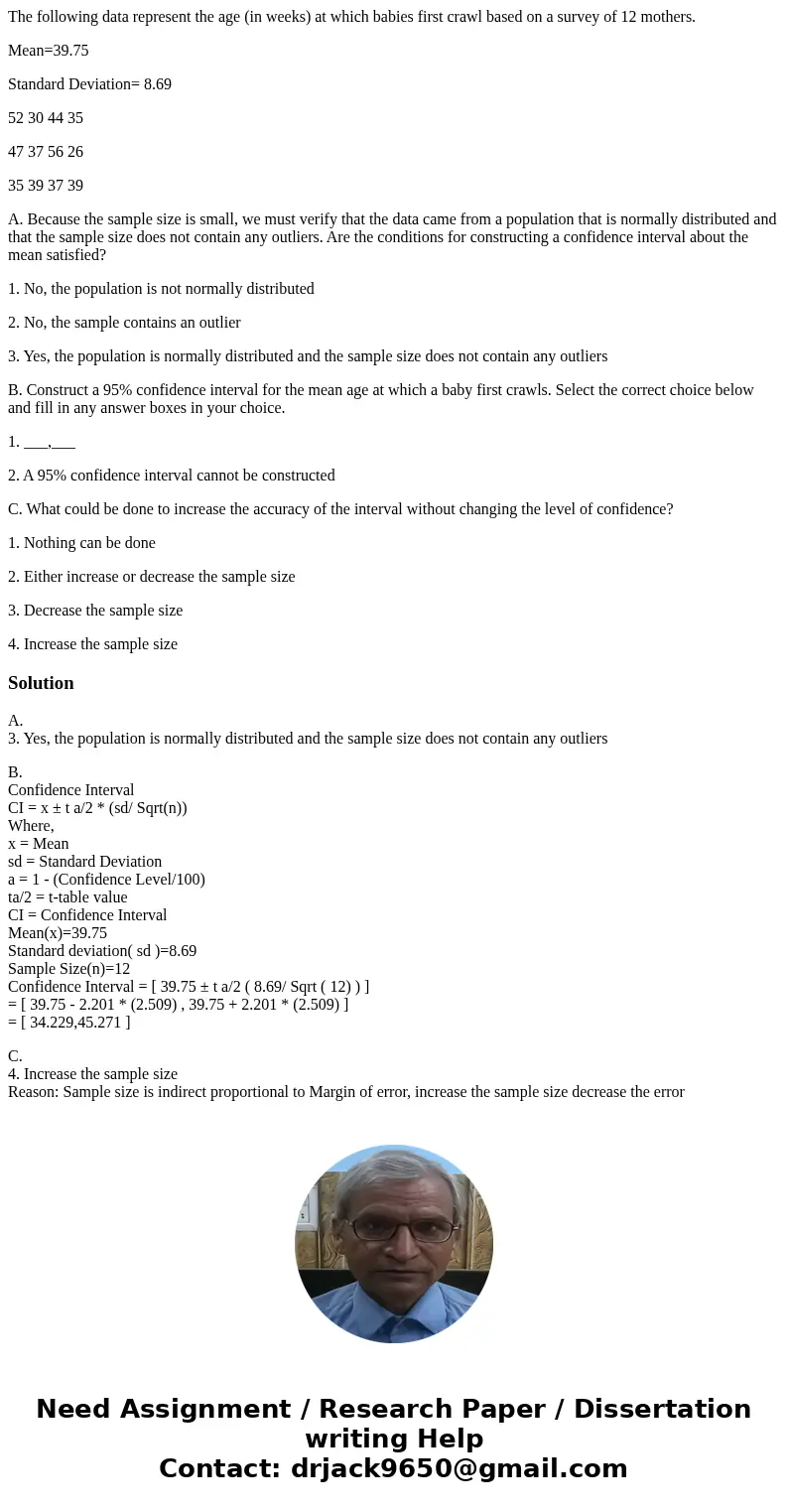The following data represent the age in weeks at which babie
The following data represent the age (in weeks) at which babies first crawl based on a survey of 12 mothers.
Mean=39.75
Standard Deviation= 8.69
52 30 44 35
47 37 56 26
35 39 37 39
A. Because the sample size is small, we must verify that the data came from a population that is normally distributed and that the sample size does not contain any outliers. Are the conditions for constructing a confidence interval about the mean satisfied?
1. No, the population is not normally distributed
2. No, the sample contains an outlier
3. Yes, the population is normally distributed and the sample size does not contain any outliers
B. Construct a 95% confidence interval for the mean age at which a baby first crawls. Select the correct choice below and fill in any answer boxes in your choice.
1. ___,___
2. A 95% confidence interval cannot be constructed
C. What could be done to increase the accuracy of the interval without changing the level of confidence?
1. Nothing can be done
2. Either increase or decrease the sample size
3. Decrease the sample size
4. Increase the sample size
Solution
A.
3. Yes, the population is normally distributed and the sample size does not contain any outliers
B.
Confidence Interval
CI = x ± t a/2 * (sd/ Sqrt(n))
Where,
x = Mean
sd = Standard Deviation
a = 1 - (Confidence Level/100)
ta/2 = t-table value
CI = Confidence Interval
Mean(x)=39.75
Standard deviation( sd )=8.69
Sample Size(n)=12
Confidence Interval = [ 39.75 ± t a/2 ( 8.69/ Sqrt ( 12) ) ]
= [ 39.75 - 2.201 * (2.509) , 39.75 + 2.201 * (2.509) ]
= [ 34.229,45.271 ]
C.
4. Increase the sample size
Reason: Sample size is indirect proportional to Margin of error, increase the sample size decrease the error

 Homework Sourse
Homework Sourse